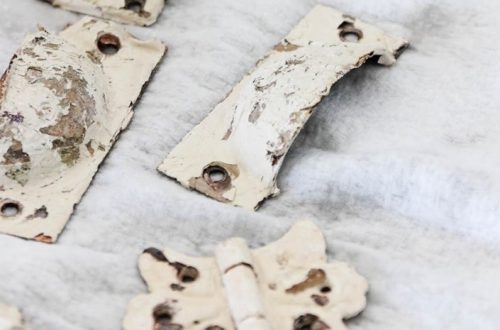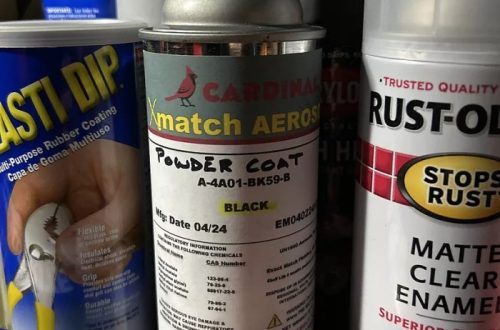Introduction to Laboratory Glassware
In every lab, glassware is crucial. It allows us to measure, mix, and handle various substances with precision. Two essential items in this glassware category are beakers and graduated cylinders. Understanding their differences and uses will guide scientists and technicians in choosing the right tool for their tasks. Though both beakers and graduated cylinders are fundamental, they serve different purposes and have unique features. Our focus on these items can help streamline lab operations, and enhance the accuracy of experiments. In the following sections, we’ll delve into each tool’s specifics and compare their applications to help make the right choice for your lab needs.
Beaker Overview
Characteristics and Common Uses
A beaker is a versatile piece of laboratory glassware. It is cylindrical, with a flat bottom, often marked with graduations for approximate measurements. Beakers range in size, typically from 10mL to over 1L, catering to various volumes of liquids. Commonly, laboratories use beakers for diluting chemicals, creating buffers, or collecting experiment byproducts. While beakers have graduation marks, they are best suited for rough estimates due to their approximate 5% or greater error margin.
Advantages of Beakers
Beakers are favored for their incredibly versatile nature, supporting a plethora of tasks across different types of labs. Their wide-mouth design allows for easy stirring and heating on a plate. The flat bottom provides stability, and the presence of a spout facilitates smooth pouring. Available in both glass and plastic, beakers provide a convenient solution for handling liquids when precise accuracy is not a priority. Their resilience to heat changes also means they can be repeatedly autoclaved without distorting calibration.
Limitations of Beakers
Despite their utility, beakers fall short when precise measurements are essential. The wide opening can result in faster evaporation or vaporization of liquids, which may not be ideal in all situations. With an error approximation of 5% or greater, they are not recommended for tasks requiring high accuracy, such as analytical applications. One must consider these limitations when deciding whether a beaker is the appropriate tool for a given lab activity.

Graduated Cylinder Explained
Design and Accuracy
A graduated cylinder, often cylindrical with a flat bottom, is designed for precision. It features fine graduation marks for measuring liquid volumes accurately, typically within a 0.5% to 1% error margin. The cylinder’s narrow shape helps to minimize the liquid’s surface area, reducing evaporation and aiding in precise reading.
Primary Applications
Graduated cylinders are ideal for tasks where accuracy is critical. They’re used in applications ranging from research labs to industrial settings, where precise measurements of liquid volumes are a must.
Advantages of Graduated Cylinders
Graduated cylinders offer a high degree of accuracy, essential for detailed experiments. The range of volumes, from 1mL to 1L, makes them suitable for many tasks. They also feature a spout, making liquid transfer easier and reducing spillage.
Limitations of Graduated Cylinders
One downside to graduated cylinders is they can be more fragile than beakers. Their tall design might make them less stable and prone to tipping. For storage, their shape is not as conducive as the wider beakers. Additionally, reading the meniscus requires training to ensure accuracy, which can be a barrier for some users.
Comparative Analysis
Accuracy and Precision Comparison
In a comparative analysis of beakers and graduated cylinders, accuracy is a key factor. While beakers have a general error margin of about 5% or more, graduated cylinders are engineered for precision with an error range of just 0.5% to 1%. This distinct difference makes graduated cylinders the go-to for exact measurements.
Suitability for Different Laboratory Tasks
Beakers excel in tasks such as mixing solutions, preparing buffers, and general-purpose holding of liquids. They’re less suitable for tasks demanding high precision. On the other hand, graduated cylinders are indispensable when precise volume measurements are critical, such as in analytical chemistry or pharmacology.

Practical Tips for Making the Right Choice
When to Use a Beaker
Opt for a beaker when you need a resilient container for heating, mixing, or roughly measuring liquids. Their broader design is advantageous for tasks requiring frequent access or agitation.
When to Use a Graduated Cylinder
Select a graduated cylinder when the accuracy of the liquid volume is paramount, such as when preparing a standard solution or conducting a quantitative analysis.
Caring for Your Lab Glassware
Maintenance and Longevity
Proper care and maintenance are crucial for extending the lifespan of glassware such as beakers and graduated cylinders. To ensure longevity, it’s essential to clean and store these items carefully. Thorough cleaning with appropriate detergents and gentle handling during storage can help prevent damage and maintain the integrity of the glassware.
Additionally, regular autoclaving and manual checks for calibration are essential practices that contribute to the reliability and accuracy of the glassware over time. Autoclaving helps sterilize the glassware, promoting safety and hygiene in laboratory settings. Meanwhile, manual checks for calibration, which may involve verifying volume graduations, ensure that the glassware continues to provide accurate measurements, thus upholding its functionality and reliability for experimental and scientific purposes. By implementing these care practices, users can maximize the value and longevity of their glassware while ensuring the accuracy and safety of their work.
Practical Tips for Making the Right Choice
Choosing the right glassware in the lab is key to successful experiments. Here are some practical tips to make the right choice between a beaker and a graduated cylinder:
When to Use a Beaker
- For general tasks like stirring, mixing, or roughly measuring liquids, a beaker is ideal.
- Use a beaker when wide access to the container is needed, like when adding solids to liquids.
- Pick a beaker for activities that require frequent liquid handling or when precise volume is not critical.
- Choose a beaker when heating or cooling solutions, as they handle temperature changes well.

When to Use a Graduated Cylinder
- Use a graduated cylinder for tasks where exact volume measurements are necessary.
- Opt for a graduated cylinder when conducting experiments that demand high precision, like quantitative analyses.
- When transferring liquids to another container, a graduated cylinder’s spout provides accuracy.
- Go for a graduated cylinder when small volume measurements could determine the outcome of an experiment.
These tips can guide you to select the right lab glassware for your experiments. Remember, the accuracy of your measurements can greatly impact the results of your laboratory work. By choosing wisely between a beaker vs graduated cylinder, you’ll ensure your experiments are as precise and reliable as possible.
Caring for Your Lab Glassware
Proper care of lab glassware is crucial. It ensures accuracy and extends longevity. Here’s how you can maintain your beakers and graduated cylinders:
Maintenance and Longevity
- Clean your glassware after each use to prevent residue buildup.
- Check for cracks or chips regularly, as these can lead to breakage or contamination.
- Handle with care; both beakers and graduated cylinders can break if dropped.
- Use non-abrasive materials when cleaning to avoid scratching the glass.
- Autoclave glassware to sterilize it, but be sure to follow the manufacturer’s guidelines.
- Dry glassware properly before storing it to avoid water stains or potential growth of microbes.
- Calibrate your graduated cylinders regularly to maintain precision in measurements.
By following these maintenance tips, your glassware will remain a reliable partner in your lab experiments.
Conclusion
Choosing between a beaker and a graduated cylinder is essential for accurate lab results. Consider what is most important for your task. Need rough liquid measurements? Go for a beaker. For precision, a graduated cylinder is better. Remember that proper care ensures your glassware’s longevity and accuracy. Beakers are great for general use, and graduated cylinders are key for precision tasks. Always keep glassware clean and well-maintained. In fact, the choice you make can greatly impact the outcome and efficiency of your experiments.




